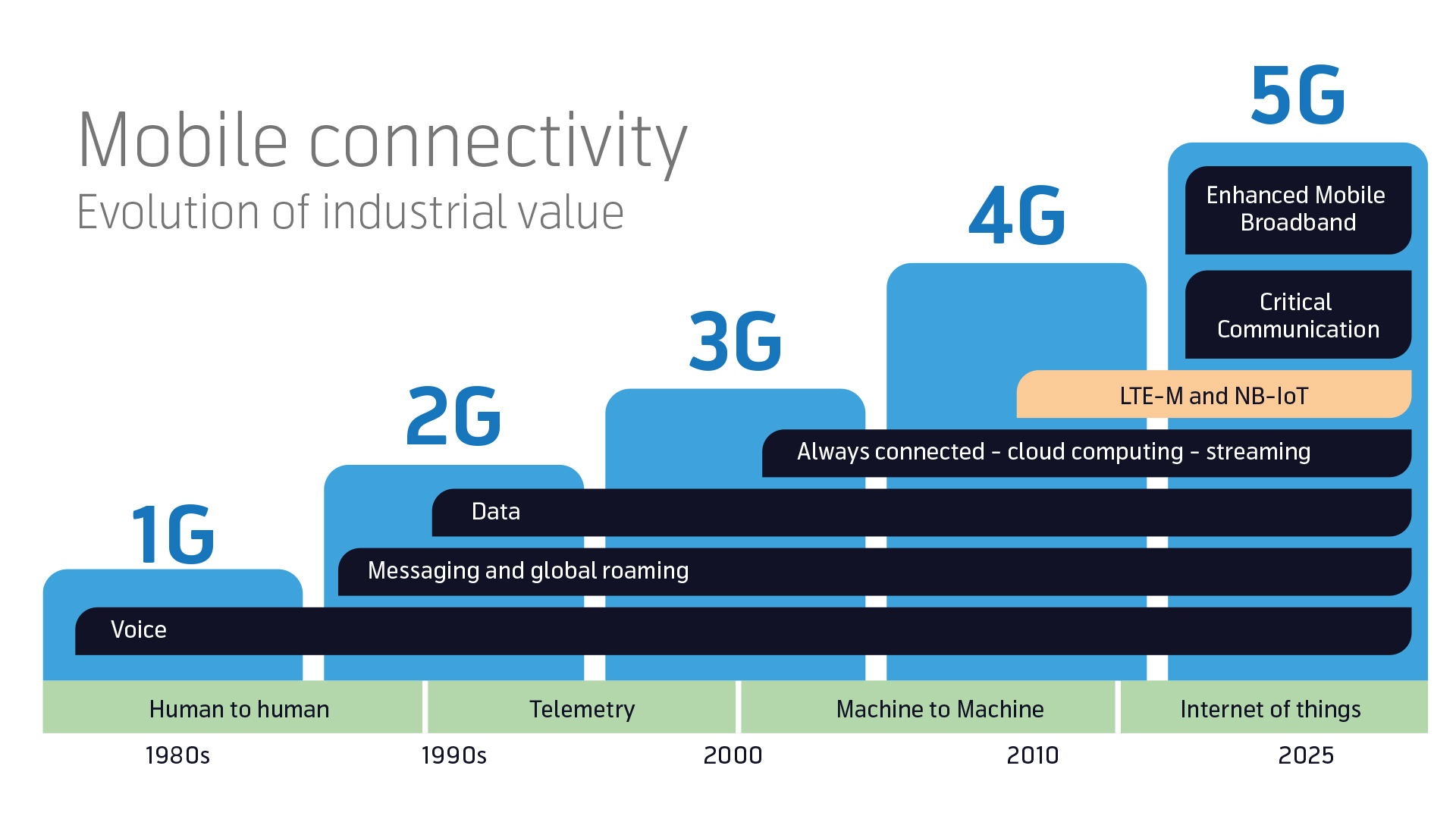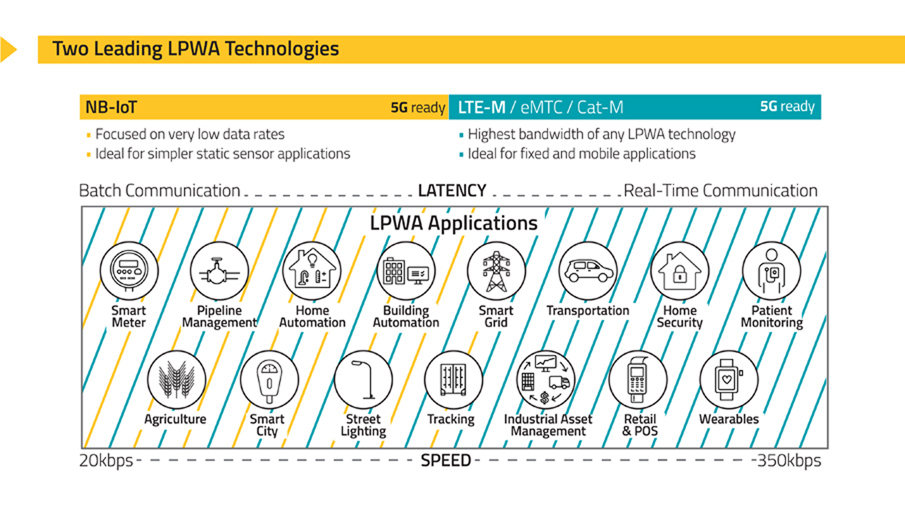4G and 5G GPS Trackers – Cellular IoT in GPS Asset Tracking

Our mission is to help businesses connect, protect, and derive more value from their assets. As a leading global innovator, developer, and supplier of IoT solutions, we drive continuous innovation to enable our partners to deploy confidently at scale worldwide.

This article was originally published in August 2020 and has been updated with our recent developments!
Greater network coverage, lower device costs, and superior device functionality is moving asset tracking towards a ‘mainstream’ enterprise requirement, with Cellular IoT set to dominate the asset tracking market.
With 2G and 3G network sunsets accelerating globally, businesses around the world are upgrading their asset-tracking hardware to LTE-M and NB-IoT: Low-Power Wide-Area Cellular Networks designed for the Internet of Things. These Cellular networks are particularly well suited for battery-powered asset tracking applications, like trailer, bin, container, livestock, and equipment tracking, as they support incredibly low power consumption for longer battery life, improved range and penetration indoors, and overall better performance!
In this article, we discuss the differences between LTE-M and NB-IoT networks, their use in 4G / 5G GPS asset tracking, and our experiences deploying 4G / 5G GPS tracker devices across both networks around the world.
4G / 5G GPS – Gee, this is confusing
The GPS tracking devices or sensors you attach to your assets are useless without a way to communicate the data they collect – whether that’s location, temperature, on/off status, etc. Cellular IoT, also commonly referred to as Mobile IoT, connects devices using existing mobile networks, which makes a lot of sense considering 95% of the global population lives in an area covered by at least a 2G network!
Most IoT and GPS devices, especially those installed on assets that don’t move very often, do not require the same speed or bandwidth as consumer cellular devices, which transmit large, rich packets of data. Cellular IoT networks, then, transmit small packets of simple data periodically, for example, the GPS coordinates of an asset once a day.
So, when we talk about our 4G or 5G GPS tracker device range, we are referring to Cellular IoT networks, specifically LTE-M and NB-IoT, which were originally introduced as part of the 4G-LTE specification back in 2016. Both LTE-M and NB-IoT networks are now formally recognized as 5G GPS technologies, which means the networks and our LTE-M / NB-IoT devices will be supported long after 4G network shutdowns (which aren’t anticipated for quite a while).

Image: From 2G to 5G: The history of mobile connectivity
For a more in-depth look at evolving LTE specifications, we suggest you check out GSMA’s article on Mobile IoT in the 5G Future.
What’s the difference between LTE-M and NB-IoT?
So now that we know LTE-M and NB-IoT networks are here to stay for the foreseeable future, what are the differences between the two?
Both LTE-M (often also referred to as Cat-M1) and Narrowband IoT (NB-IoT) are Cellular IoT networks used specifically for Internet of Things and Machine to Machine (M2M) applications.
Bandwidth – NB-IoT uses a very narrow bandwidth (200kHz), compared to LTE-M which uses 1.4Mhz (7000x larger)! Bandwidth is the width or capacity of the channel in which data can be transferred. Think lanes on a freeway – more lanes mean more cars can get along the freeway in a given time period. Bandwidth is the width of the road here.
Data Transfer Rate – As a result of NB-IoT’s narrow bandwidth, the maximum data transfer rate is around 250kb per second. The data rate on LTE-M is about four times faster – up to 1Mbps.
Cell Tower Handover – LTE-M and NB-IoT both support cell tower handover, which refers to the process of transferring a connection from one cellular tower to another. Latency on NB-IoT may be slighter higher than LTE-M in some regions.
Range – Both networks provide excellent range and penetration, particularly when compared to 2G or 3G networks.
Power – An NB-IoT modem uses slightly less energy to transfer data than an LTE-M modem. But because of NB-IoT’s slower data transfer rates, uploads take longer than LTE-M. So, power consumption on either network is similar and very low.
Firmware Over-The-Air – Device firmware can be updated remotely over-the-air on both networks. However, larger OTA updates on NB-IoT may result in substantial power use given the network’s slow transfer rate.
Cellular IoT in Asset Tracking Applications
NB-IoT is generally very well suited for sensor monitoring and data logging applications, where a very high volume (hundreds to thousands) of generally stationary assets report infrequently! This is often referred to as Massive IoT.
Did my asset move today? – No
Is the fire alarm powered – Yes
Is the emergency exit sign powered – Yes
Soil moisture – 22%
In our recent testing, we have also found NB-IoT can be quite suitable for mobile, or real-time asset tracking, depending on coverage and maturity in your region!
LTE-M is most commonly utilized in vehicles, trailers, equipment, cold chain monitoring, or other tracking applications where assets are frequently moving, and greater volumes of tracking data is required.
If only one network exists in your region, either is acceptable to use with any of our 4G / 5G GPS tracker devices. Often availability will be the primary driver in your solution.

Image: Sierra Wireless (Semtech)
A Maturing IoT Asset Tracking Ecosystem
We launched our first 4G asset-tracking device in early 2018. Since then, we have seen both network coverage and low-power modem technology mature significantly.
In August 2020, GSMA reported 43 LTE-M Networks and 96 NB-IoT Networks across the world. As of May 2022, deployments have grown to 60 LTE-M Networks and 110 NB-IoT Networks. You can check NB-IoT and LTE-M Cellular IoT deployments in your country here.
Our early experience with both LTE-M and NB-IoT has shown LTE-M to be more mature and better supported. Over the last two years, however, the cellular IoT landscape has matured dramatically. In 2018, for example, it was oftentimes difficult to even connect to an NB-IoT network, and using a roaming SIM on these networks was out of the question. This is no longer the case and we have seen many NB-IoT success stories of late. Performance has been excellent.
Our next-generation of 5G GPS tracker devices launched late last year also now support global roaming between LTE-M and NB-IoT networks with minimal delay and marginal impact on battery life or performance. Automatic roaming between Cellular LPWAN networks enables new low-power, indoor/outdoor global asset tracking applications in connected packaging, parts and inventory management, supply chain management, shipping and logistics, and more!
Our cellular IoT asset tracking experience as of May 2022 with both networks can be summarized as:
LTE-M on SIM’s Home Network
Highly confident, well-proven
LTE-M with a Roaming SIM
Confident, well-proven over many years. It is important to apply the relevant APN and bandmasks for best performance. Battery drain will be slightly greater when out of coverage on a roaming SIM when compared to a ‘home’ SIM.
NB-IoT Home Network SIM
Confident, well-proven. In general, NB-IoT networks are ‘younger’ than LTE-M in many regions, so some minor teething issues (which have since been resolved for LTE-M) may remain on certain NB-IoT networks. However, issues are fast becoming few and far between.
NB-IoT with a Roaming SIM
Confident – this has improved greatly over the last 12 months
Explore Our 5G GPS Trackers
Build a better Cellular IoT 5G GPS asset tracking solution with the largest portfolio of certified and integration-ready LPWAN LTE-M and NB-IoT GPS asset tracking devices and the widest range of location technology options including GNSS, WiFi Positioning, Cell Tower Positioning, and Bluetooth® Low Energy!
Battery-Powered
Oyster3
Oyster Edge
Yabby Edge
Yabby3
Remora3
OBDII and Wired
View our knowledge base to learn more about selecting a SIM provider based on your region and use case, or get in touch with us today to discuss 4G and 5G GPS tracker solutions in your region!
Read More
Discover More Digital Matter
For those seeking solutions specifically from esteemed GPS manufacturers, our offerings cater to a diverse array of requirements. For those in the agricultural sector, our agriculture sensors have been meticulously designed to help farmers monitor and manage their fields more efficiently.
Beyond that, we offer the 4G GPS tracker for those who require real-time tracking and immediate data access. The mining industry, which demands rugged and reliable tracking solutions, can benefit from our specialized mining tracker. In essence, no matter the industry or specific need, Digital Matter is committed to providing top-notch tracking solutions to enhance operational efficiency and asset security.
Read Less
Related News

Let’s Get Started
Submit the form to get in touch with a Digital Matter representative from your region.
Contact UsSubscribe
Get helpful content delivered straight to your inbox.
Let’s Get Started
Submit the form below to get in touch with a Digital Matter representative from your region.

Looking for support? Check out our knowledge base.

Information on becoming a Digital Matter Partner.

Information on pricing, availability, and proof of concept.

Guidance on selecting the right products for your application.






